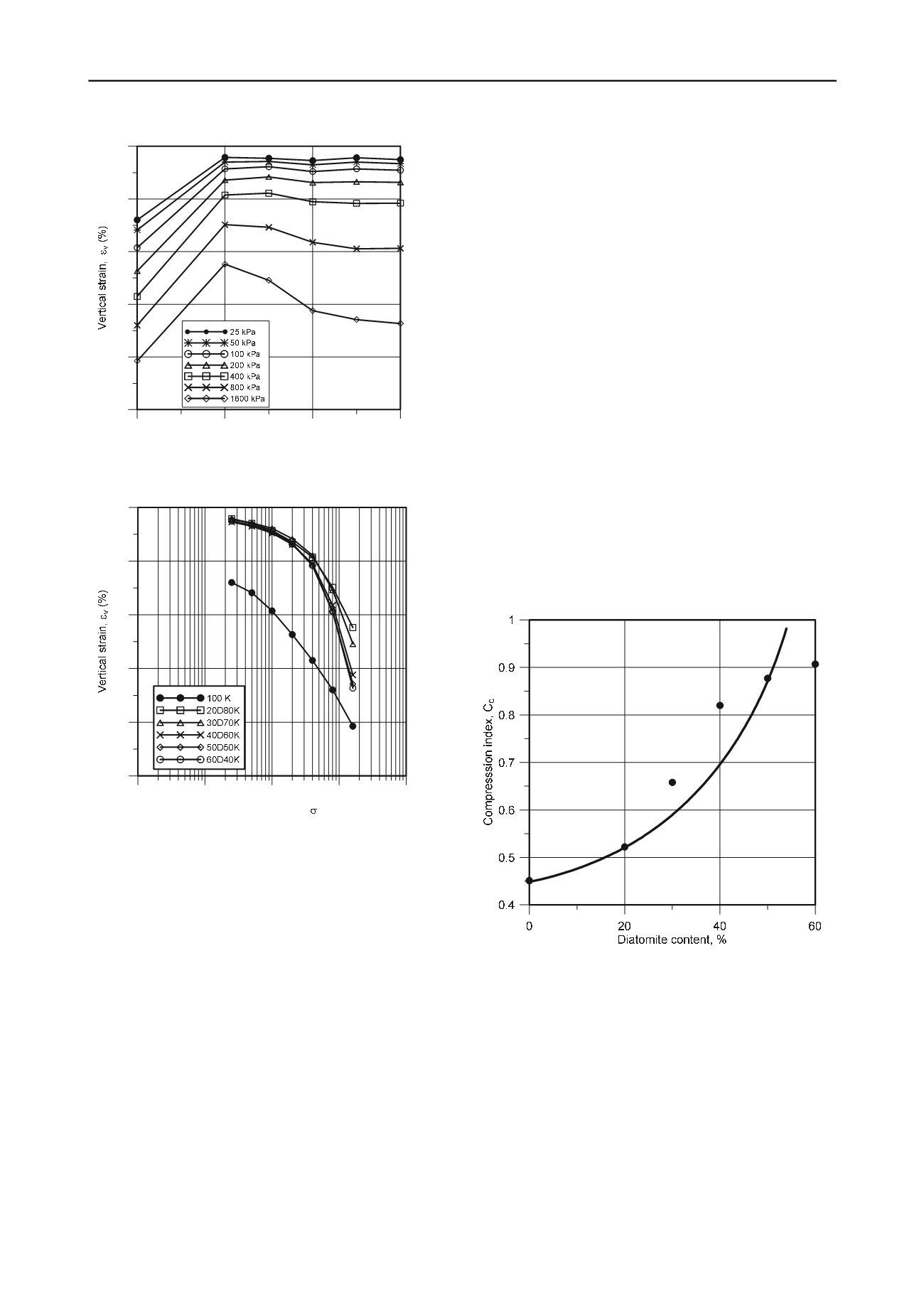
327
Technical Committee 101 - Session II /
Comité technique 101 - Session II
Proceedings of the 18
th
International Conference on Soil Mechanics and Geotechnical Engineering, Paris 2013
0
20
40
60
Diatomite content (%)
25
20
15
10
5
0
1
10
100
1000
10000
Effective vertical stress, '
v
(kPa)
25
20
15
10
5
0
Figure 2 Variation on strain with diatomite content
Figura 3 Comparion between stress-strain curves obtained with different
diatomite content
5. DISCUSSION
The compressibility of fine-grained soils containing a high
percentage of clay minerals depends not only on the mechanical
properties of its constituents, but also on physico-chemical
factors.
The difficulty in dealing with soil mixtures is manifested not
only by the complexity of their behavior, but also in the absence
of index parameters to characterize and compare soil mixtures.
Consequently, a soil with a different composition (e.g.,
diatomite-kaolin with varying diatomite content) must be
treated as a different material every time there is a change in the
soil composition, and laboratory tests must be performed
wherever there is a significant variation in the soil composition.
Therefore part of their compressibility is determined by the
mechanical properties of the soil particles and the balance by
the physico-chemical interaction of their constituents.
5.1 Index properties
According to Tanaka and Locat (1999) the increase in
activity is believed to be an example of the influence of diatom
microstructure on the test results.
5.2 Compressibility
The influence of diatom microfossils on soil compressibility is
complex and depends on several factors (
e.g
., diatomite content
and stress level). The results of this experimental program show
that the influence of diatoms microfossils in the engineering
behavior of soils cannot be ignored.
There are several very interesting phenomena associated
with the flow over cavities, like that presented by the frustules
of diatoms. Models developed to examine shear flow over pores
of different shapes, radii, and depths have shown that pores
morphology is important in determining the streamlines of flow
(Pozrikidis, 1994). The kinematics structure of the flow is
discussed with reference to eddy formation and three-
dimensional flow reversal. This associate phenomenon suggests
that water inside diatom frustules could not be mechanically
inert and affect the pore water pressure generated in the
interstices between diatoms and clay particles. It therefore,
influences the effective stress and the change the stiffness.
Relationship between diatomite content and C
c
are shown in
Figure 4 for the six mixtures. The results show that the
compressibility of kaolin increases sharply with the addition of
diatomite. Therefore, the C
c
value for mixtures with diatomite is
larger than pure kaolinite.
Figure 4 Relationship between diatomite content and C
c
6. CONCLUSIONS
Diatoms are outstanding examples of natural micro- and
nano-structured materials that control the mechanical, hydraulic,
and physico-chemical properties of soils. It is concluded that
diatomaceous soils exhibit the following characteristics:
1. Activity increase with the increase in diatomite content.
2. The stress-strain curves show different characteristics
depending on the diatomite content.
3. The strain-diatomite content curves show different
characteristics depending on the stress level.
4. The presence of a significant amount of microfossils can
significantly influence the mechanical behavior of soils,
particularly the compressibility.


